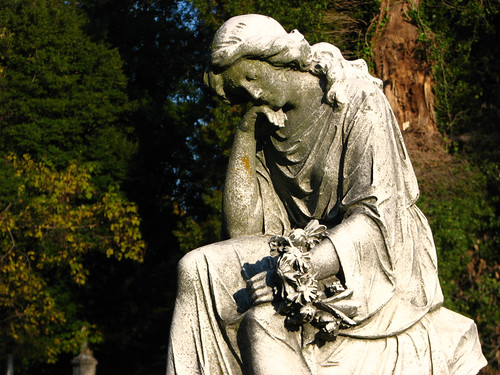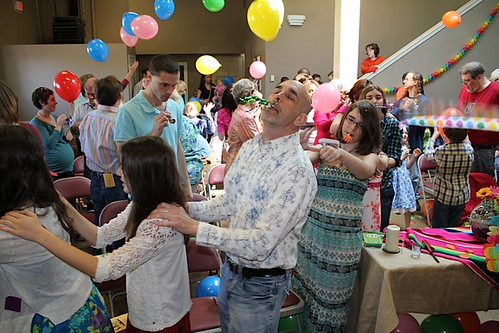Known by the Scars
This story from the Gospel of Luke (Luke 24) is similar to the one that I read last week from the Gospel of John. The disciples are gathered together, and the Risen Christ appears to them. And what does he show them as proof of his identity? In John, his hands and side. And in Luke, his hands and his feet. His wounded hands and side. His wounded hands and feet. “Look at my hands and my feet; see that it is I myself,” he says.
It’s an odd story for these gospel writers to have recorded. You’d think that if they truly wanted to convince their readers that Jesus was the Christ, that they would have described his holy aura, described him as one who shone like the sun. That’s certainly how many artists have depicted the Risen Christ over the years.
But they didn’t get it from this story. Because Jesus comes, in this story, and in last week’s story as well, comes as one who has been crucified, and he has the marks to prove it. He has risen from the dead, yes, but the proof of his identity is found, not in his holy aura, but in his wounds.
We live in a culture that works hard to hide our wounds. We love to cover things up. We cover up weeds with mulch. We cover up dirt with paint. We cover up scars or acne with makeup. We cover up lies with more lies. We rewrite history in order to hide our family wounds or our wounds as a nation, or even our wounds as church. If something is too painful or too hard or too complicated to deal with, if something might make things look messy, might make someone look culpable, what do we do? We sweep it under the carpet, we revise it, we cover it up, we hide it. We hide our woundedness, our brokenness, our scars in a million different ways.
David Buttrick tells the story about a new bulletin cover that came out years back that depicted the Risen Christ appearing to Mary Magdalene, and the Christ looked like a “devout, if demented” Kirk Douglas, and Mary Magdalene looked like Natalie Wood. But that wasn’t the problem with it, he said, the problem with the bulletin cover was summarized by the church janitor, who upon seeing it, said, “No nail holes.”
No nail holes. And that’s the way that we were raised, many of us who grew up in Baptistland. We went from Christmas to Palm Sunday to Easter, from one triumphant holiday to another, with never a hint of Lent or Good Friday. No nail holes.
We focused on the omnipotent God, on the omnipresent God, on the omniscient God. And we came up with all kinds of theological formulas to protect those definitions of God. If God is all powerful, then they couldn’t have killed Jesus, who is God incarnate, right? So that means that God wanted Jesus to be killed, that God offered Jesus as a sacrifice, right, because that was the only way that God could be appeased. And why did God need to be appeased? Oh, because God was angry. But it was righteous anger, right? Augh! And we grew up, many of us, saying stuff like that. Which doesn’t say much for God, does it?
But what David Buttrick suggests in his book, The Mystery and the Passion, is that the clearest image that we have of God is the image of Jesus hanging on the cross. God’s power is not in God’s knowing everything, not in God’s controlling everything, but rather, God’s power is in God’s self-giving love.
Oh, wait. It’s not just David Buttrick who suggests that. The Apostle Paul does as well. In his letter to the church at Corinth, he writes:
For the message of the cross is foolishness to those who are perishing, but to us who are being saved it is the power of God. For it is written: “I will destroy the wisdom of the wise;
the intelligence of the intelligent I will frustrate.” Where is the wise person? Where is the teacher of the law? Where is the philosopher of this age? Has not God made foolish the wisdom of the world?
For since in the wisdom of God the world through its wisdom did not know God, God was pleased through the foolishness of what was preached to save those who believe. Jews demand signs and Greeks look for wisdom, but we preach Christ crucified: a stumbling block to Jews and foolishness to Gentiles, but to those whom God has called, both Jews and Greeks, Christ the power of God and the wisdom of God. For the foolishness of God is wiser than human wisdom, and the weakness of God is stronger than human strength.
Early Christians were ridiculed for their belief in a crucified Cbrist, because, really, in Buttrick’s words, What kind of God dies? How can sovereign God, the high and holy God of Israel, the God of the Law and the prophets, be tangled up in a messy trial, tossed in a Jerusalem drunk tank, abused, humiliated, and put to death?... How could God be mixed up in the disgrace, indeed the outright obscenity, of crucifixion?
But Paul wrote: we preach Christ crucified. Not Christ glorified, but Christ crucified. The Apostle Paul preached that the power of God is revealed in the message of the cross.
The leaders of South Africa realized this too late when they put Nelson Mandela on trial for treason back in the 60s. Mandela had been involved in the movement against the horrible, cruel, oppressive system of apartheid under which blacks and whites were separated under white rule. Though he was looking at a death sentence, and fully expected to be put to death, he chose to represent himself at this trial, at the end of a four hour speech, he said this:
During my lifetime I have dedicated myself to this struggle of the African people. I have fought against white domination, and I have fought against black domination. I have cherished the ideal of a democratic and free society in which all persons live together in harmony and with equal opportunities. It is an ideal which I hope to live for and to achieve. But if needs be, it is an ideal for which I am prepared to die.
This statement, this moment, this deeply held conviction so ignited the people of South Africa and the people of the world that though Mandela was imprisoned on an island for the next 30 years, the power of the cross, you might say, the power of self-giving love had been unleashed. His willingness to die for freedom inspired others to do the same. And three decades later, when the system of apartheid fell, Mandela became the first black South African President.
"And this is love," said Jesus, "that a man or a woman should lay down his or her life for a friend."
God’s power is revealed in the cross. The Risen Christ’s identity is revealed in the wounds in his hands and feet. And does that mean that our identity as Christ’s followers is revealed, not in what we believe, not in what our morals are, not in how cheerful we are, but rather in the wounds that we take on for the love of others?
...The Risen Christ comes to the disciples as one who has been wounded. The Risen Christ is identified by his wounds. And as we follow him along the way, we will be wounded, too. They will know we are Christians by our love, by our love, we used to sing. And because that is true, this is true, too: they will know we are Christians by our wounds.
May our lives reveal the power of the cross, the power and the love of God.
Excerpts from the sermon from Pastor Cindy, April 22, 2012


